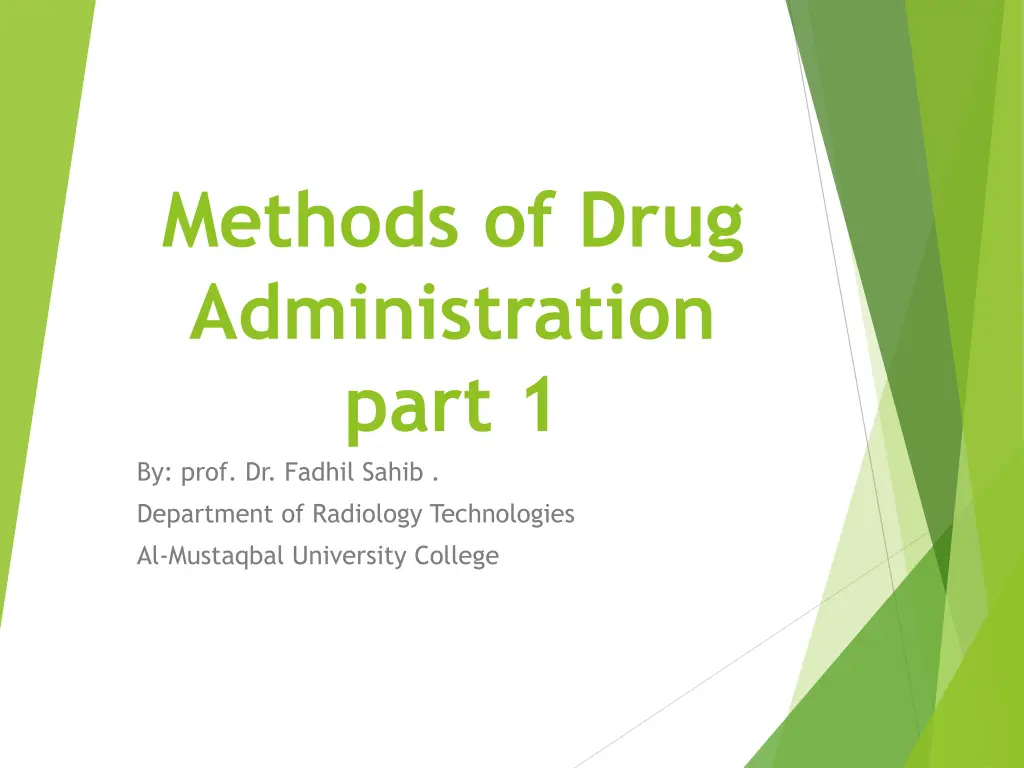
Drug Administration Methods Overview
Explore various methods of drug administration such as oral route, injection routes like subcutaneous, intramuscular, and intravenous, with specific goals, advantages, and limitations. Understand absorption processes, considerations for drug types, and optimal administration techniques for different scenarios.
Download Presentation

Please find below an Image/Link to download the presentation.
The content on the website is provided AS IS for your information and personal use only. It may not be sold, licensed, or shared on other websites without obtaining consent from the author. If you encounter any issues during the download, it is possible that the publisher has removed the file from their server.
You are allowed to download the files provided on this website for personal or commercial use, subject to the condition that they are used lawfully. All files are the property of their respective owners.
The content on the website is provided AS IS for your information and personal use only. It may not be sold, licensed, or shared on other websites without obtaining consent from the author.
E N D
Presentation Transcript
Methods of Drug Administration part 1 By: prof. Dr. Fadhil Sahib . Department of Radiology Technologies Al-Mustaqbal University College
Overview of Drug Administration Methods Drugs can enter the body in various ways, each with specific goals, advantages, disadvantages. and
1. Oral Route Taken capsules, tablets, or chewables. common, expensive. by mouth as liquids, Most safest, least
1. Oral Route Absorption begins in mouth/stomach, mostly in small intestine. Affected by liver metabolism (first- pass effect).
Limitations of Oral Route Irritates digestive tract (e.g., aspirin). Poor or irregular absorption for some drugs.
Limitations of Oral Route Destroyed enzymes. by stomach acid or Avoid when patient can't take orally, needs quick/precise dosing, or has poor GI absorption.
2. Injection Routes Subcutaneous (SC) Intramuscular (IM) Intravenous (IV) Intrathecal (IT)
Intramuscular and Intravenous IM: For drugs not absorbed orally (e.g., insulin, vaccines). IV: Immediate effect, used in emergencies and anesthesia.






















